Maximizing Health with Bamia: Expert Insights with Nutritionist Alexandra Wallmart
Posted on February 11, 2024 • 7 minutes • 1377 words
Table of contents
-
Part 1: scientific
- Q1: What makes bamia a superfood, and how does it stand out nutritionally from other vegetables?
- Q2: There’s been a lot of talk about bamia’s role in managing blood sugar levels. Can you explain how it assists in this regard?
- Q3: Heart health is a major concern globally. How does incorporating bamia into one’s diet benefit heart health?
- Q4: Nutrition aside, are there other health benefits associated with bamia that might not be as well-known?
- Q5: For those looking to add bamia to their diet, could you share some preparation tips or common mistakes to avoid?
-
Part 2: tasty
- Q6: Could you share your favorite cooking method for bamia that retains its nutritional integrity while ensuring it’s delicious?
- Q7: Many people complain about the slimy texture of bamia. Are there cooking techniques that can minimize this aspect while keeping the dish healthy?
- Q8: How does the preparation of bamia before cooking affect its health benefits and taste?
- Q9: Are there any specific spices or ingredients that pair particularly well with bamia, enhancing its health benefits?
- Q10: For those interested in preserving bamia for later use, what methods would you recommend that maintain its nutritional value?
Part 1: scientific
Introduction: Bamia, more commonly known as okra or “lady’s fingers,” is a green, flowering plant known for its edible seed pods. It’s a staple in many diets around the world, celebrated not only for its culinary versatility but also for its numerous health benefits. To delve deeper into this superfood, we sat down with Alexandra Wallmart, a renowned nutritionist with a passion for promoting healthy eating habits.
Q1: What makes bamia a superfood, and how does it stand out nutritionally from other vegetables?
Alexandra Wallmart (AW): Bamia is often hailed as a superfood due to its rich nutrient profile. It’s low in calories but high in dietary fiber , vitamins A, C, and K, and antioxidants. These nutrients are essential for various bodily functions, including improving digestion, enhancing vision, boosting immune function, and fighting inflammation.
| Comparison of calories, macronutrients and some microelements of Bamia vs Brocolli, probably a most famous superfood |
|---|
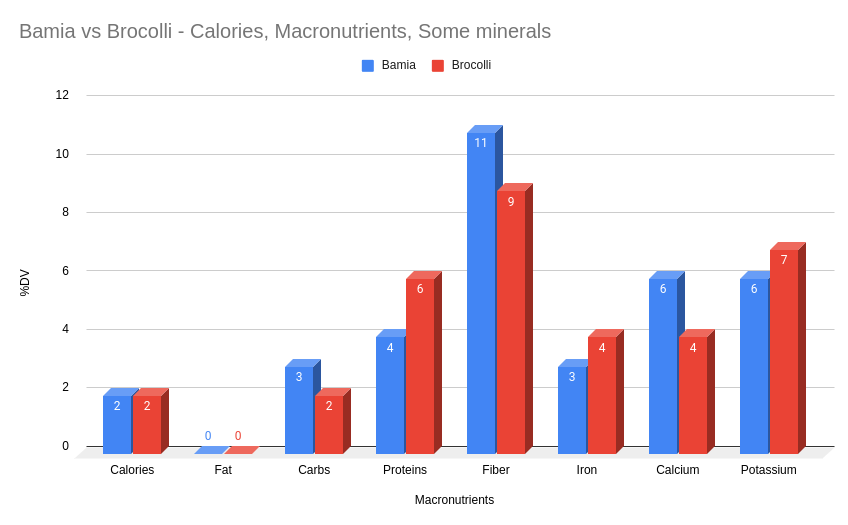 |
| Comparison of vitamins of Bamia vs Brocolli |
|---|
 |
Compared to other vegetables, bamia is particularly noteworthy for its high soluble and insoluble fiber content, which can aid in blood sugar regulation and digestive health. Additionally, its mucilaginous texture, while unique, is a boon for gut health, providing a natural laxative effect.
Q2: There’s been a lot of talk about bamia’s role in managing blood sugar levels. Can you explain how it assists in this regard?
AW: Absolutely. Bamia contains a type of fiber known as mucilage , which can help in modulating blood sugar levels. When consumed, this fiber slows down the digestion process and the absorption of sugar in the bloodstream, leading to a more gradual and stable rise in blood sugar levels rather than sharp spikes. This property makes bamia particularly beneficial for individuals with diabetes or those at risk of developing the condition. Furthermore, some studies suggest that the antioxidants in bamia, such as myricetin , can enhance insulin sensitivity, further aiding in blood sugar control.
Q3: Heart health is a major concern globally. How does incorporating bamia into one’s diet benefit heart health?
AW: Bamia is excellent for heart health for several reasons. First, its high fiber content can help lower bad LDL cholesterol levels, reducing the risk of heart disease. The soluble fiber in bamia binds with cholesterol in the digestive system, preventing its absorption and facilitating its excretion from the body. Additionally, bamia is a good source of potassium , which can help lower blood pressure by balancing out the negative effects of salt. Its antioxidant content also plays a role in preventing oxidative damage to the cardiovascular system, further protecting the heart.
Q4: Nutrition aside, are there other health benefits associated with bamia that might not be as well-known?
AW: Yes, there are several lesser-known benefits of bamia. For instance, its high antioxidant content not only supports heart health but also has anti-fatigue properties. The vitamins and minerals in bamia can contribute to improved energy levels and reduced oxidative stress, leading to overall better physical performance. Moreover, bamia’s high vitamin C content supports skin health by promoting collagen formation, which can help in achieving a more youthful appearance. Additionally, the folate in bamia is crucial for pregnant women, as it supports fetal development and reduces the risk of birth defects.
Q5: For those looking to add bamia to their diet, could you share some preparation tips or common mistakes to avoid?
AW: Bamia is incredibly versatile and can be cooked in various ways, including steaming, boiling, frying, and even eating it raw in salads. However, to maximize its health benefits, I recommend cooking it lightly, such as steaming or sautéing, to preserve its nutrients. A common mistake is overcooking bamia, which can lead to a loss of nutrients and its characteristic slimy texture becoming too pronounced for some palates. To reduce sliminess, you can soak the pods in vinegar before cooking or cook them with acidic ingredients like tomatoes. Experiment with different recipes to find your preferred way to enjoy bamia’s health benefits.
Conclusion: Bamia, with its rich nutrient profile and multiple health benefits, is a valuable addition to any diet. Whether managing blood sugar levels, improving heart health, or seeking a nutrient-dense vegetable to enhance your meals, bamia offers a versatile and healthy option. We thank Alexandra Wallmart for sharing her insights and encourage everyone to explore the benefits of this superfood.
Part 2: tasty
In the second part of our interview with Alexandra Wallmart, we focus on the culinary aspect of bamia, exploring the best cooking methods to preserve its nutritional value while making it a tasty addition to any meal.
Q6: Could you share your favorite cooking method for bamia that retains its nutritional integrity while ensuring it’s delicious?
AW: One of my favorite methods is quick stir-frying. This method involves cooking bamia on high heat for a short period, which not only retains its crisp texture but also preserves its vitamins and minerals that can be lost through prolonged cooking.
| Tasty bamia |
|---|
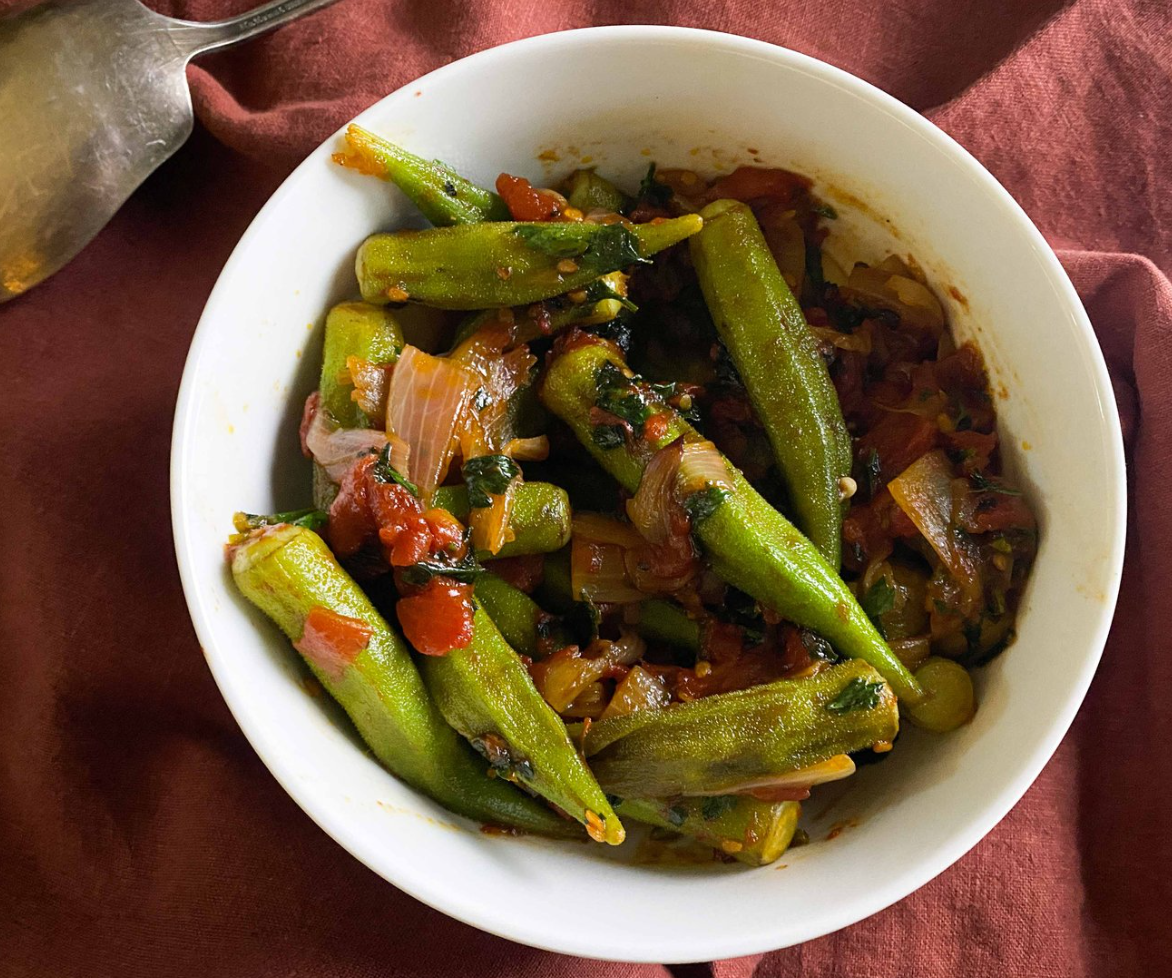 |
I recommend adding a dash of olive oil, garlic, and a variety of spices like cumin and coriander to enhance its flavor without overpowering its natural taste. Stir-frying bamia with tomatoes can also reduce its sliminess and add a lovely acidity that complements its flavor.
Q7: Many people complain about the slimy texture of bamia. Are there cooking techniques that can minimize this aspect while keeping the dish healthy?
AW: Yes, there are several techniques to reduce the sliminess without compromising health benefits. One effective method is to blanch the bamia briefly in boiling water and then immerse it in ice water before cooking. This process helps to seal in the nutrients while reducing the mucilage that contributes to its slimy texture.
| Bamia with humus |
|---|
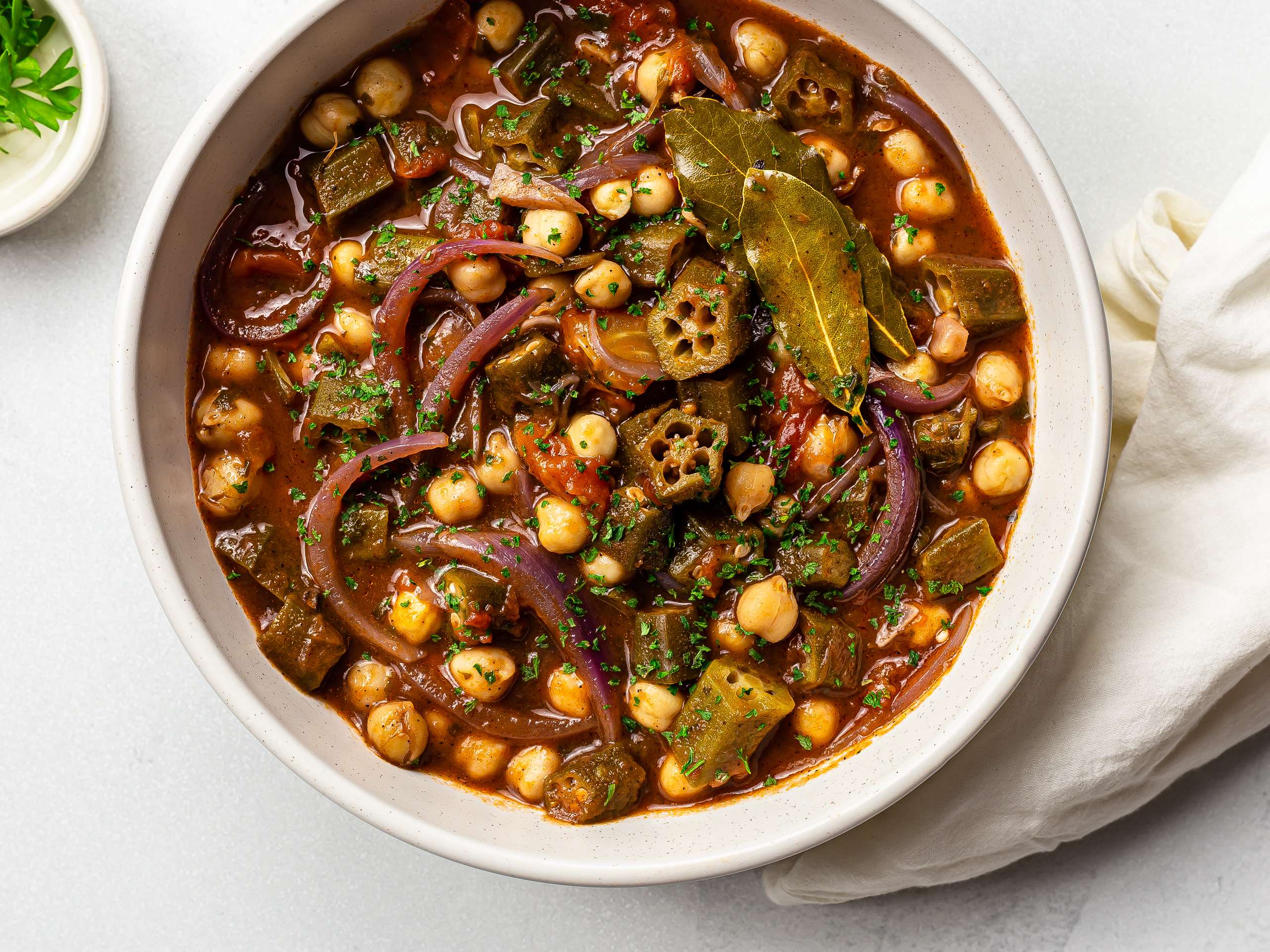 |
Another method is to roast bamia in the oven; this dries out the mucilage and results in a crispy, less slimy texture. Roasting at a moderate temperature, around 400°F (200°C) for 15-20 minutes, can enhance its natural flavors while keeping it nutritious.
Q8: How does the preparation of bamia before cooking affect its health benefits and taste?
AW: Preparation is key to maximizing both the health benefits and taste of bamia. For instance, cutting bamia into larger pieces rather than thin slices can help maintain its structural integrity and reduce sliminess during cooking.
| Beef Bamia with Cauliflower Rice |
|---|
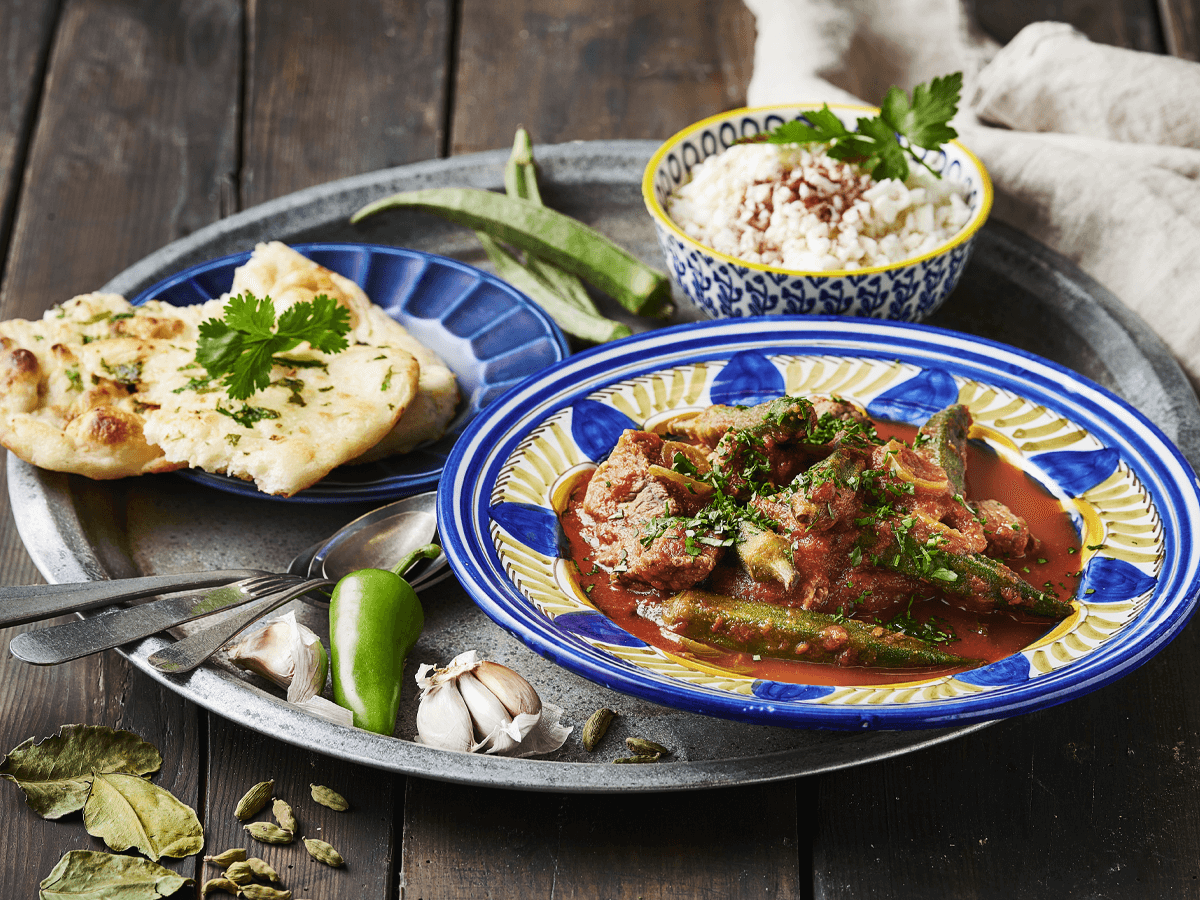 |
Also, soaking bamia in vinegar or lemon juice before cooking can help preserve its color and reduce mucilage. Importantly, avoid over-washing bamia, as water can trigger the release of more slimy substance. Lightly rinse and pat dry before cooking to keep the nutrients intact and improve texture.
Q9: Are there any specific spices or ingredients that pair particularly well with bamia, enhancing its health benefits?
AW: Absolutely. Adding spices and ingredients rich in antioxidants and anti-inflammatory properties can enhance bamia’s health benefits. Turmeric , with its curcumin content, pairs wonderfully with bamia, adding anti-inflammatory qualities and a vibrant color. Garlic and onions not only add flavor but also offer cardiovascular and immune system benefits.
| Bamia stew |
|---|
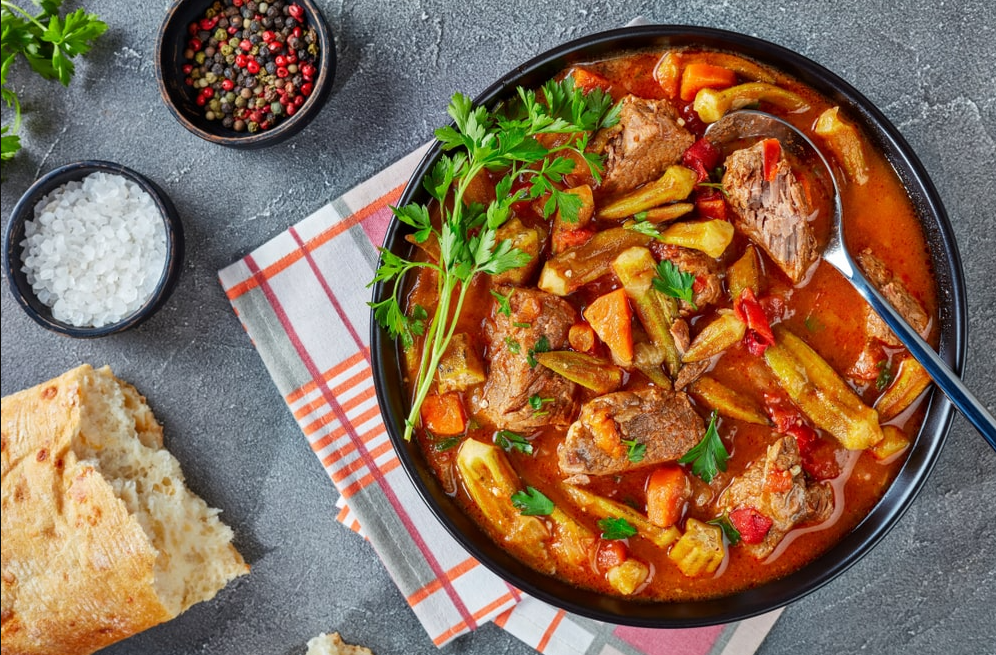 |
Tomatoes, rich in vitamin C and lycopene, can reduce sliminess and boost antioxidant content. Lastly, incorporating leafy greens or lemon juice can add vitamin C, enhancing iron absorption from bamia.
Q10: For those interested in preserving bamia for later use, what methods would you recommend that maintain its nutritional value?
AW: Freezing is an excellent option for preserving bamia’s nutritional value. Before freezing, blanch the pods briefly in boiling water to preserve their color, texture, and nutrients, then quickly transfer them to ice water to halt the cooking process.
| Bamia with tomatos |
|---|
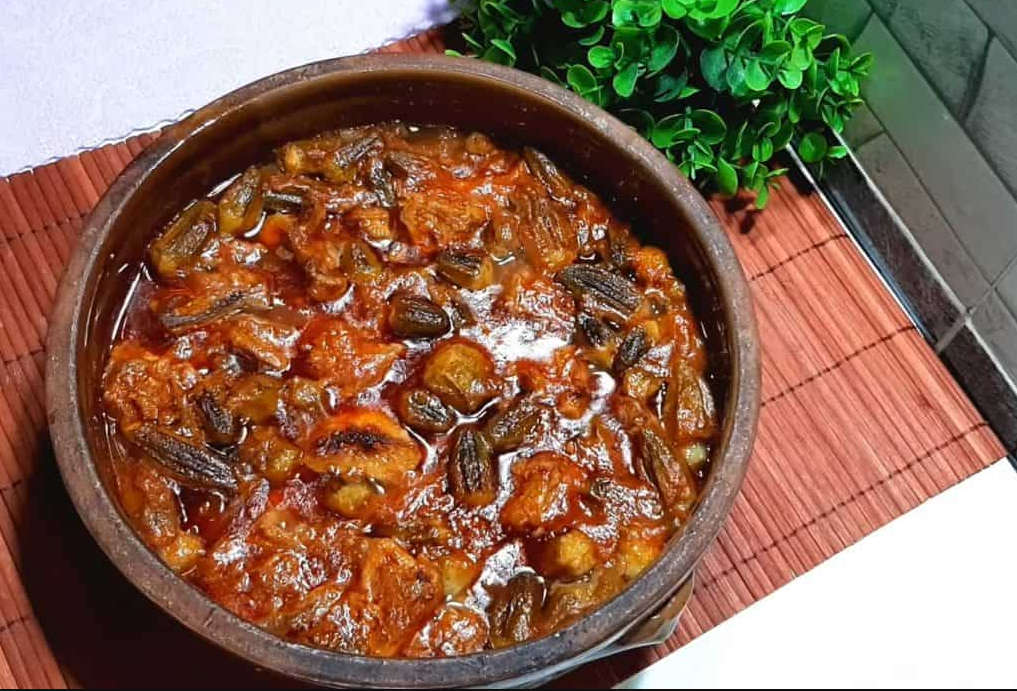 |
Dry them thoroughly before freezing to prevent ice crystal formation. Another method is pickling bamia, which can be a nutritious way to enjoy it later. Using a vinegar solution with spices can add beneficial probiotics to your diet, although it’s important to consume pickled foods in moderation due to their high sodium content.
Conclusion: Cooking bamia in ways that enhance its flavor while preserving its nutritional benefits is an art that can be easily mastered with the right techniques. From stir-frying to roasting, and even pickling, there are numerous ways to enjoy this nutritious vegetable. Alexandra Wallmart’s insights provide a valuable guide for anyone looking to incorporate more bamia into their diet in the most healthful and delicious ways possible.
Share
Tags
Counters

